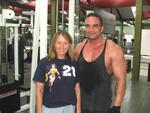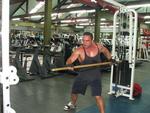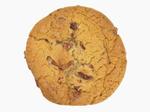 |
This article comes the courtesy of Phily Nuku and NZ Sports Nutrition www.nzsn.co.nz . Phily's a PT at Bodyworks Gym and we've been acquaitances forever. He wrote a really good article on the need to keep training diaries. So since I probably can't write it any better I thought we'd just put on site as is.
left: Lisa and Phily |
Hi all.
Man I love the off season, lifting heavy weights, eating to grow, balancing your physique, it's a time where you make real changes before your next competition.
In this installment I want to talk about the need for training diaries. Over the many years that I have been training, I'd say that I've made my best gains in the more recent years.
Over that period, I began documenting all of my workouts and regularly reviewed the information to ensure my training intensity was continually improving.
Like many, for the longest time, I had resisted the idea of documenting my workouts and this was a big mistake. It was not until I started to record and review my workouts that I began to see the many benefits of doing so, mostly achieving ongoing gains.
I now tell my clients and those who I coach, if you are not keeping a diary then you are wasting your time!
The major benefits of my training diaries include:
- Baseline Intensity Formation, weights used, reps achieved & time taken.
- Information for Goal setting and an actual measure of Progression (or not!).
- Information on variables. Such as whether I'm fully recovered, time date and place, who I'm training with and their attitudes etc.
- Most importantly, it gives me the ability to compete against someone, a Phantom (or a future me) who is theoretically & marginally better than me. This is especially important if you are the strongest in your training camp, as you shouldn't be competing with weaker individuals anyway!
What I've learned over a long time is that, if you can avoid training plateaus, then the sum of all the little ongoing gains you'll make, will over time, add up to big gains.
Prior to learning the above, I like many big guys always thought it was enough to lift the heaviest weights in the gym. The problem was, that they were the same heavy weights, week in, week out, month in, month out, year in, year out, leading to a plateau or worse- overtraining and injury.
Getting started:
While there are good training diaries out there on the Market, I find that the old 10cent 3B1 notebooks do the job for me nicely. Because I currently train 4-5 days a week I have 5 of them. One notebook for each body part, this way I can easily refer to a body parts previous workout(s) and compile a slightly harder plan of attack.
Because I want to measure and check my intensity, I always record the following:
-The time, date, place and with whom I'm training.
-As a % how positive I'm feeling before the workout.
-The exercises I'm doing, any notes on form and machine settings etc.
-Data on sets, reps & weights achieved.
-Data on Reps left in reserve, Forced reps and if I trained to Failure.
-How long the workout took me.
-A summary of how the workout went and a % ranking.
-Other stuff, like any effects of pre workout supplements etc.
Before I repeat the workout, I use the above information and plan how best to increase my intensity. I then check I'm on track during & after the workout.
Here's what I look to achieve, especially on my Base/Compound exercises:
1. To lift more weight, even if it's just a little.
Or.
2. To do more reps than the last time with the same weight.
Or
3. To do the same weights & reps as previously achieved but in less time.
Or.
4. Some type of combination of the above 3 things.
Note: Later rather than sooner, when you have gone as far as you can with your program, (extracted all of the intensity gains out of it) change it up and form a new baseline.
Like I said before, if you can continually increase the intensity of your workouts, even just by a little, then the sum of all those little ongoing gains, will add up to big gains over time. But you will have to work hard and persevere- believe me!
So just start recording those workouts and in no time at all you'll find a recording style that suits your needs. Bet you when the day comes that you forget your notebook, you'll feel naked without it.
Phily Nuku
Phily Nuku is a Fusion sponsored athlete, he is Reps registered and has 17 years experience in the Fitness industry.









